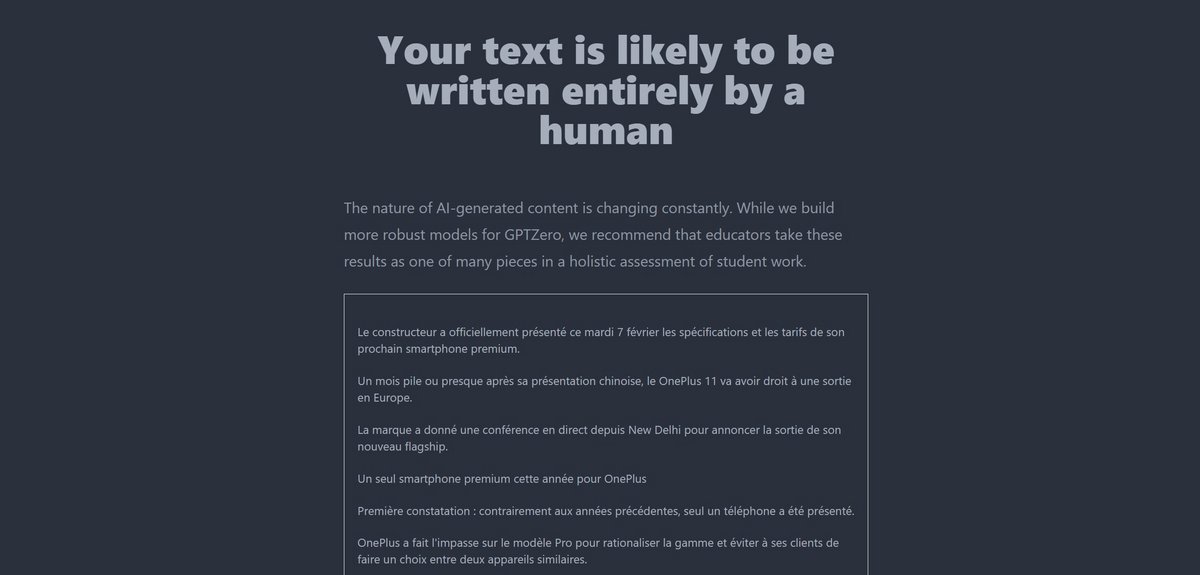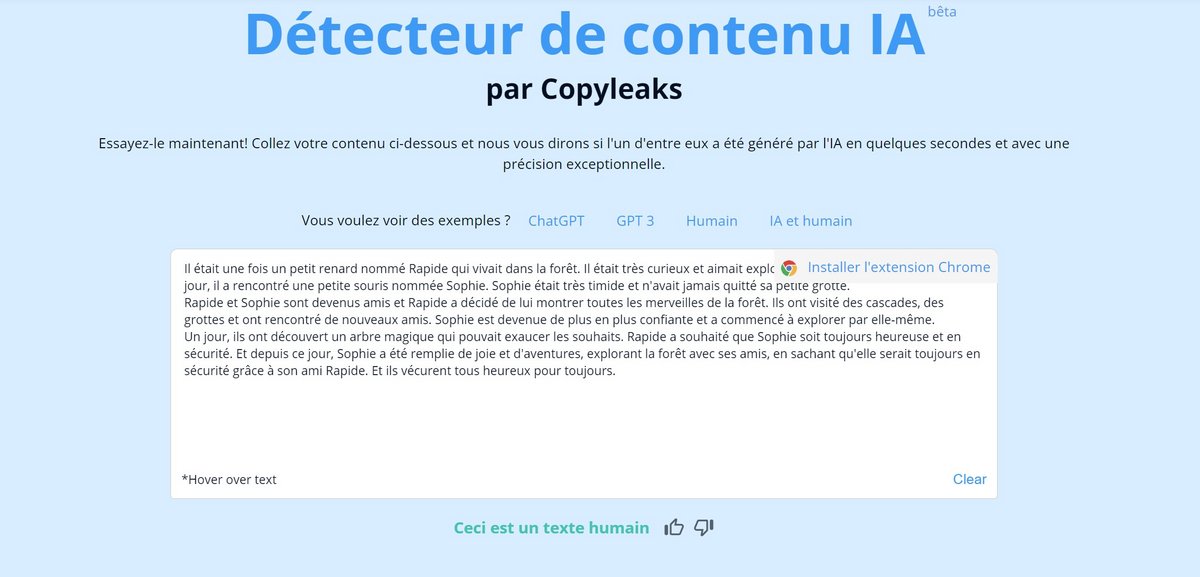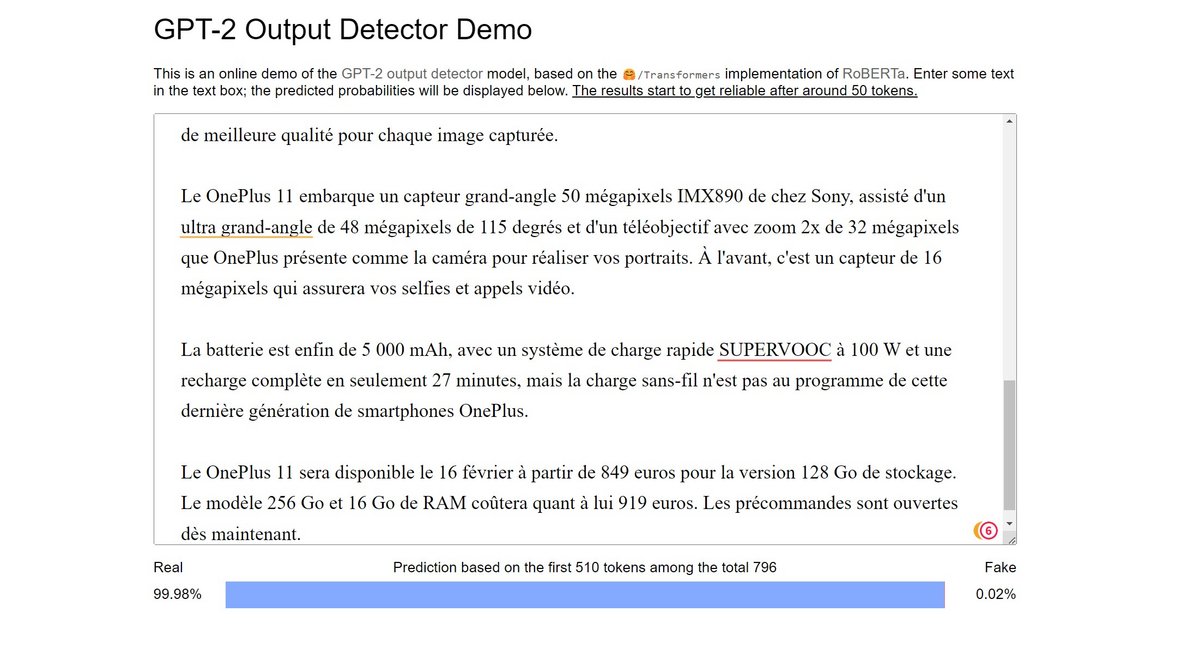ChatGPT has quickly established itself as a very popular source of information, but its ability to generate texts can be exploited for cheating, fraud, and even malicious acts. If you have any doubt about the origin of a text, it is possible to detect if it was written by a human or by the OpenAI conversational agent.
College students, high school students and students, translators, web editors… For them, the temptation is great to save time on their projects by using ChatGPT, capable of quickly producing content (more or less reliable) if given the right instructions. . Be aware that there are techniques to spot whether a text was written with the help of the platform or by hand.
How to know if a text was written by ChatGPT?
1. Use OpenAI’s classifier
Following criticism of certain uses of ChatGPT, OpenAI has decided to develop a tool called “AI Text Classifier” to which one can submit a text to find out if it was written by a human or generated by an artificial intelligence. .
It is still not completely reliable, and OpenAI warns users that it can be wrong, especially on texts that are not written in English, that are written by children or that are too short (1,000 characters minimum are required to submit for analysis). The firm also specifies that it is easy for a human to slightly modify a text written by ChatGPT to deceive the classifier.
During our test, the tool was not able to answer us for a text written by a human: “The classifier considers that it is not clear if the text was generated by AI”, told us he let know. It did, however, successfully identify a text generated by ChatGPT.
2. Submit text to GPTZero
Developed by Edward Tian, an American computer science student, GPTZero also offers to check if a text comes from the writing of a human or an artificial intelligence. Paradoxically, this solution is more feature-rich than the official OpenAI classifier.
Already, it allows you to import a file in .pdf, .docx or .txt format instead of having to paste the text in a field. At the end of the analysis, GPTZero grants a complexity score as well as a score measuring the evolution of complexity over the text, variations being an important sign of a text generated, at least in part, by AI .
The tool underlines in yellow the sentences which seem to it to be written by an algorithm. It also indicates very clearly the probability that a text is produced by a human or an AI, and if it is the whole text or only an extract of it which is concerned.
The service is based on the GPT-2 model, a version older than that used by ChatGPT (which is based on the GPT-3 model), used for example by the game AI Dungeon. In our case, GPTZero successfully identified the origin of the first text we submitted to it (written by a human), although it was in French. For the second text, generated by ChatGPT, he mistakenly assumed that it was entirely handwritten, but correctly gave it a low complexity score.

3. AI Content Detector by Copyleaks
Still in beta, this tool remains basic and only supports copying and pasting of text. Once the latter has been analyzed, it displays a percentage of probability that an AI has been used or that it is a text written by a human. Text suspected of being generated by AI appears in red to differentiate it from that believed to be from a human.
Unfortunately, the reliability of the tool needs to be reviewed. He estimated that the text we submitted to him is 99.9% human-made, while it was created by ChatGPT. However, Copyleaks claims that its service is natively compatible with French. On the other hand, he clearly identified our article written by an editor as such.

4. The OpenAI Detector Alternative
More comfortable with texts in English and based on a GPT-2 detection model, OpenAI Detector failed like its competitors to analyze our text output from ChatGPT as coming from an AI, estimating at 99.8% that it was the work of a human. However, he did recognize that our handwritten text was of human origin.

There are many AI detection tools for text, but most of them struggle to detect AI-generated text. Only the OpenAI classifier, which also created ChatGPT, recognized that the submitted text came from an artificial intelligence. However, it was less effective in determining the origin of our human-written text.
.